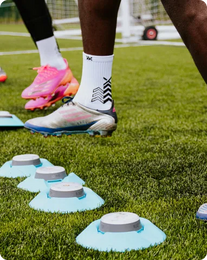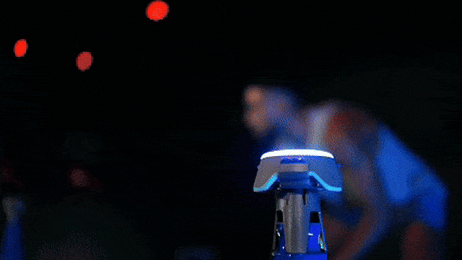Speed in soccer is the fabric that holds all other skills together to make a successful player and team. That’s why speed drills for soccer need to be among team development workout activities. Dribbling, passing, and shooting are fundamental if your team has to have that competitive edge during a match. But your players won’t stand a chance unless they are fast.

In soccer, speed refers to four major components:
Pure speed
The rate at which the player moves from point A to point B with or without the ball.
Technical speed
This is game action speed, and it involves controlling and manipulating the ball at speed while changing direction whenever necessary.
Reaction speed
The ability to process and react quickly to actions from teammates and opponents.
Mental speed
This is all about rapid decision-making based on what’s happening around the ball.
When you look at these components closely, you’ll realize they can only be perfected when playing the game. However, a couple of soccer training drills can help develop a foundation for the four types of speed highlighted above.
Of importance, remember that being fast is not enough. You also need to include drills to get better at soccer that emphasize conditioning. This ensures your team can endure the 7 to 9.5 miles that soccer players run throughout a single match with reduced muscle injury risk.
Soccer Running Drills That Build Explosive Players
Running Uphill Work
When learning how to build explosive speed in soccer, players should combine regular running with strength training. Gym-specific exercises, such as leg extensions and squats, may help increase muscle power and overall strength. But there’s almost no running involved in these activities.
Hill work, on the contrary, involves straight-ahead running while working harder to overcome gravity. This causes the muscles to contract powerfully, leading to longer and faster running strides. These exercises also teach how to get better at soccer by developing proper acceleration and arm movement mechanics.
Stadium Stairs Speed Drill
These speed drills for soccer are ideal for building power and endurance, especially when no nearby incline is available for uphill running.
Soccer Flying Sprints
Add these flying sprints to your soccer training program to teach how to build a conditioning base for soccer while improving top-speed sprinting mechanics.
Push Start Speed Exercises for Soccer
During matches, soccer players often need to accelerate from different positions. This drill is among the best for how to increase speed for soccer and develop starting mechanics and reaction speed.
Lean, Fall, Sprint Acceleration Drill
This drill is one of the most basic speed soccer exercises and an essential part of how to teach quickness in soccer.
Sprint-Backpedal Repeats
This is an important drill for how to improve off the ball movement in soccer. It teaches players how to transition between sprinting and backpedaling during a match effectively.
Bounce and Hop Soccer Speed Drills with a Ball
These soccer ladder drills offer a combined way to boost agility, quickness, and ball control - critical for drills to get better at soccer.
Dynamic Suicide Running Drill
One of the oldest soccer speed exercises, suicides train players to run faster and endure physical exhaustion. It’s a valuable drill for how to get better at soccer through mental toughness and determination.
Conclusion
While training your players to improve speed and excellent ball control, you also want to increase their reflex and reaction time. With its app-powered smart flash training system, BlazePod is the right tool for this job. This pro-level training kit supercharges your workout sessions by triggering your players’ quickness in responding to visual cues, leading to improved agility, reaction time, balance, coordination, and strength.
When thinking about what is the speed drill for soccer players or how to build explosive speed in soccer, BlazePod helps you create tailored drills that meet your team’s unique training needs.
























